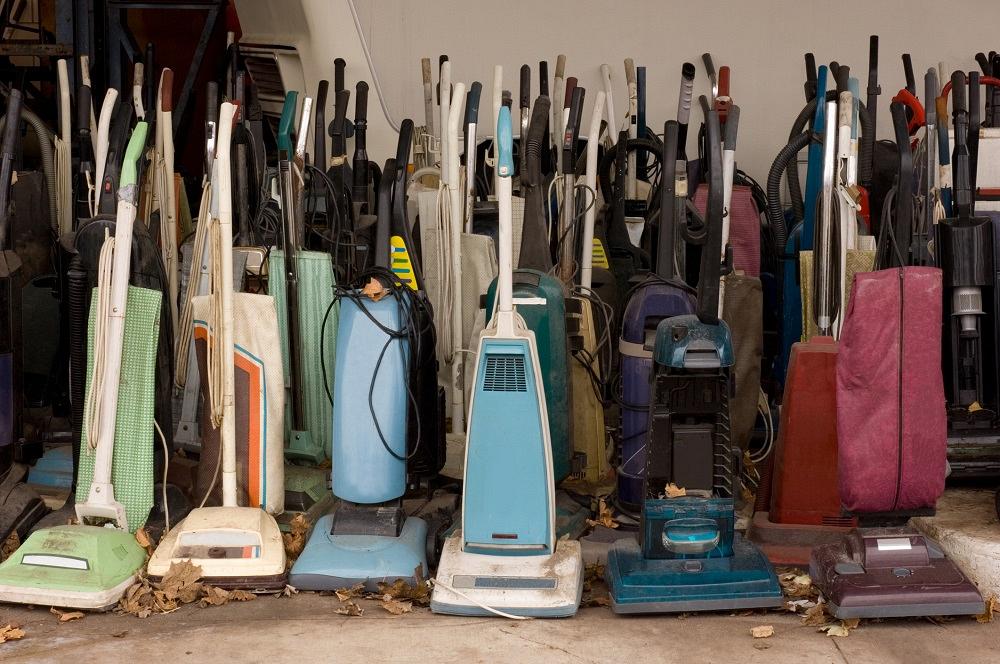- FMA
- The Fabricator
- FABTECH
- Canadian Metalworking
Our Publications
Categories
- Additive Manufacturing
- Aluminum Welding
- Arc Welding
- Assembly and Joining
- Automation and Robotics
- Bending and Forming
- Consumables
- Cutting and Weld Prep
- Electric Vehicles
- En Español
- Finishing
- Hydroforming
- Laser Cutting
- Laser Welding
- Machining
- Manufacturing Software
- Materials Handling
- Metals/Materials
- Oxyfuel Cutting
- Plasma Cutting
- Power Tools
- Punching and Other Holemaking
- Roll Forming
- Safety
- Sawing
- Shearing
- Shop Management
- Testing and Measuring
- Tube and Pipe Fabrication
- Tube and Pipe Production
- Waterjet Cutting
Industry Directory
Webcasts
Podcasts
FAB 40
Advertise
Subscribe
Account Login
Search
Dyson vacuum inventor would have saved prototyping time if he’d owned a 3D printer
Why vacuum cleaners are fascinating, James Dyson’s 5,000-plus prototypes, and the possibility of buying a 3D printer
- By Kip Hanson
- July 1, 2019
My brother’s name was Kirby, so of course his childhood was filled with an inordinate number of vacuum cleaner jokes and frequent cries of “you suck!”
It seems I’ve developed a weird preoccupation with floor cleaning appliances as a result of all the prepubescent humor I engaged in, because much of my adult life has been spent searching for the next great vacuum cleaner.
I’ve had Orecks and Hoovers, Kärchers and Mieles (I can’t afford a BMW, so I invest in German vacuum cleaners instead), an Electrolux as heavy as a bank vault, and a baby-blue Kenmore canister model that I inherited from my mother. There’s also been a slew of wet-vacs for the garage: Craftsmans, Ridgids, and Milwaukees, among them.
Sadly, though, no Kirby.
I’ve become even more obsessed with vacuum cleaners after reading about cyclonic separation authority James Dyson’s 5,127 prototypes and wonder if he could have brought that down to a more reasonable number had he owned a 3D printer and some decent design software. Apparently, he wonders the same thing, as last year his foundation awarded $500,000 for 3D printing equipment to the State University of New York at New Paltz.
The link between vacuum cleaners and 3D printing is deeper than some British inventor’s relentless determination to develop bagless vacuum cleaners, however. Miele began using conformally cooled, 3D-printed inserts in its plastic injection molds more than 10 years ago, improving vacuum cleaner part quality and greatly reducing cycle times.
And although my requests to several vacuum cleaner manufacturers for details on their production processes have gone unanswered, you can be sure that 3D printing plays an increasingly important role at these companies, as it does at so many others.
I’m not alone in my quest for the perfect vacuum cleaner. In fact, for those of us who envision a future where every home has a replicator-like 3D printing device in the wall that allows everything from screwdrivers to ice cube trays to be printed in moments, vacuum cleaners might be the next frontier.
As proof, take a few moments to Google “3D-printed vacuum cleaner” and you’ll receive more than 73 million results. That’s way more than 3D-printed lawn mower parts (just shy of 1.6 million hits) and 3D-printed toilets (63.7 million), although still less than 3D-printed dog toys (93 million).
Among these are numerous 3D models of vacuum cleaner replacement parts and special nozzles, as well as a bevy of DIY 3D-printed vacuum cleaners for anyone lucky enough to own a MakerBot. Some enterprising soul has even reverse-engineered a Dyson handheld machine and uploaded the plans for all the vacuum-cleaning world to see.
But perhaps the most useful of these are instructions for converting a Roomba into a 3D-printed BattleBot, or, better yet, a B.A.R.T., the 3D-printed Bartending Automated Robot Technology from beermaker Stella Artois.
Finally, I’ve found the justification for buying my own 3D printer. I think I’ll name it Kirby.
About the Author

Kip Hanson
About the Publication
- Podcasting
- Podcast:
- The Fabricator Podcast
- Published:
- 04/16/2024
- Running Time:
- 63:29
In this episode of The Fabricator Podcast, Caleb Chamberlain, co-founder and CEO of OSH Cut, discusses his company’s...
- Trending Articles
- Industry Events
16th Annual Safety Conference
- April 30 - May 1, 2024
- Elgin,
Pipe and Tube Conference
- May 21 - 22, 2024
- Omaha, NE
World-Class Roll Forming Workshop
- June 5 - 6, 2024
- Louisville, KY
Advanced Laser Application Workshop
- June 25 - 27, 2024
- Novi, MI



























